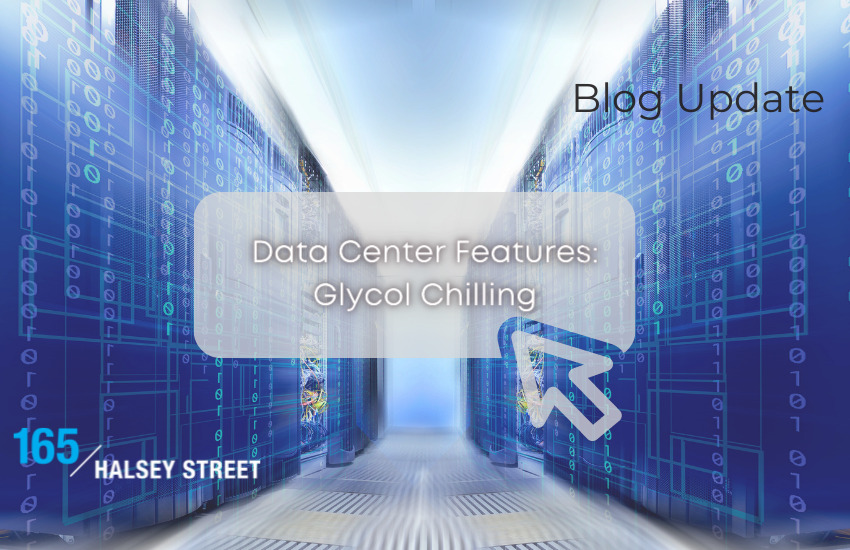The Search for the Perfect Data Center Space – Glycol Chilling
Why You Should Choose a Data Center That Utilizes Glycol Chilling
We’re back with our next segment to assist you in your hunt for the perfect data center space. With so many options available, it’s paramount to have a firm grasp on what features a data center offers to properly assess if a facility will suit your needs. If you missed last week’s segment on CRAC Units, go ahead and catch up on it here! While we’re on the topic of cooling, let’s tackle the next subject: glycol chilling.
Not Your Mother’s Automotive Antifreeze
Glycol belongs to the alcohol family and is a class of organic compounds. When infused with water, this mixture creates a refrigerant very similar to antifreeze that possesses the cooling properties needed to combat the intense temperatures of a data center. Glycol chilling is the name given to this cooling method. When this mixture of glycol and water passes through the pipes, heat absorbs right out of the ITE hardware (information technology equipment). Although similar to antifreeze, glycol chilled water in a data center setting is explicitly designed to achieve optimal flowing and cooling, so the perfect ratio of glycol to water is imperative to the ebb and flow of the overall system.
Why Liquid Chilling?
Long gone are the days of developers and engineers shying away from liquid cooling. It makes sense; we’ve been taught our entire lives that electronics and water do not mix, but that’s simply not the case anymore. As technology and engineering have improved ten-fold over the years, that fear is not nearly as concerning as it once was. Mechanical faults are no longer the problem at large due to the innovative resolutions and advances in cooling technology. Mission Critical Magazine states, “Today, they are developing and implementing liquid cooling that meets and exceeds data center needs and sets them up for opportunities to add computing power that fuels growth and profitability.” Liquid cooling is the way!
Why Not Just Use Water?
When the glycol is mixed with water, it actually lowers the freezing point thereby ensuring the coolant remains in an optimal liquid form. If your coolant freezes and your process halts, you’re risking downtime and increased costs – two major detriments you’ll want to avoid if you expect to be successful. For those who have concerns about the safety of using glycol, rest assured knowing these systems are heavily tested and properly sealed prior to usage.
As a consumer, it’s wise to seek out a data center facility that offers glycol chilled water. It’s safe, reliable, and ensures a streamlined process, equaling less downtime and minimized risks. Efficiency and effectiveness are always top of mind. Offering you the very best at 165 Halsey Street many of our cabinets offer a mix of N+1 parallel redundant glycol chilled water and DX package units. Here to support your needs and make your decision an easy one, you may browse our availability here.

